How to Clean Bass Strings Without Taking Them Off
 Your fingers are disgusting.
Your fingers are disgusting.
All day long, they pick up dirt and dust and grime. You don't even want to think about some of the stuff that ends up on your fingers.
When you play the guitar, your fingers rub against the strings and the fretboard, transferring some of the filth to the instrument.
But it's not just the filth.
The dirt combines with the sweat and oils on your fingers to form a sticky grime that gets into the microscopic grooves of your guitar strings. It builds up over time and alters the sound they produce.
You need to clean your strings, ideally every time you play. This article will teach you how to clean guitar strings and also the fretboard. We'll cover a quick clean you should do daily, a deep clean you should do regularly, and a special method you can use for bass guitar strings.
Table of Contents
- 1 Why Do You Need To Clean Your Guitar Strings?
- 2 How Often Should You Clean Your Guitar Strings?
- 3 How To Clean Guitar Strings
- 3.1 Quick Clean (Every Time You Play)
- 3.1.1 Materials Needed
- 3.1.2 Before Playing
- 3.1.3 After Playing
- 3.2 Deep Clean
- 3.2.1 Materials Needed
- 3.2.2 Step 1: Prepare The Guitar
- 3.2.3 Step 2: Wet Your Cloth
- 3.2.4 Step 3: Pinch And Rub
- 3.2.5 Step 4: All At Once
- 3.3 Bass Strings
- 3.3.1 Materials Needed
- 3.3.2 Step 1: Take Them Off
- 3.3.3 Step 2: Boil Them
- 3.3.4 Step 3: Take Them Out
- 3.4 Lubricating Your Guitar Strings
- 3.4.1 Materials Needed
- 3.4.2 Step 1: Spray
- 3.4.3 Step 2: Wipe
- 3.1 Quick Clean (Every Time You Play)
- 4 How To Clean A Guitar Fretboard
-
- 4.0.1 Materials Needed
- 4.0.2 Step 1: Protect Your Pickups
- 4.0.3 Step 2: Scrub
- 4.0.4 Step 3: Condition
-
- 5 Cleaning Guitar Strings: Final Thoughts
Why Do You Need To Clean Your Guitar Strings?
They're fresh out the packet. Bright, clean. You can hear what they sound like just by looking at them.
When they're tightened and tuned, and you strum them, the sound dances.
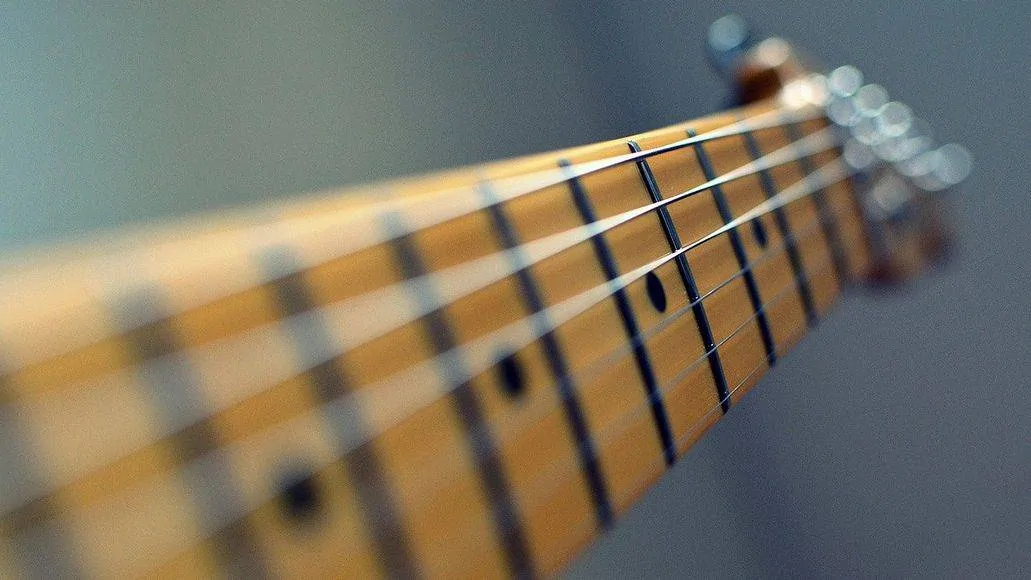
But slowly, over time, they dull. Maybe you used them over and over, maybe you left them in the corner.
Whatever the reason, they're not the strings they used to be. Covered in grime, they're heavier, they vibrate sluggishly, and their tone deadens.
When they reach this stage, you might be able to bear their sound when you practice alone in your room (though you'd be doing yourself a disservice), but you really don't want to use them in public.
At this point, you're probably better off changing them, than cleaning them. But if you had been cleaning them occasionally all along, they never would have reached this point.
How Often Should You Clean Your Guitar Strings?
The more you make a habit of keeping your strings clean, the less you'll have to worry about that gory grime. If you clean them regularly, they'll last longer, and so will their brightness and clarity.
To that point, cleaning them every time you play is the best approach. If that is too often for you, at least clean them prior to a recording session or to playing live. It might seem like a pain, but it's much quicker and easier than having to change your guitar strings often.
How To Clean Guitar Strings
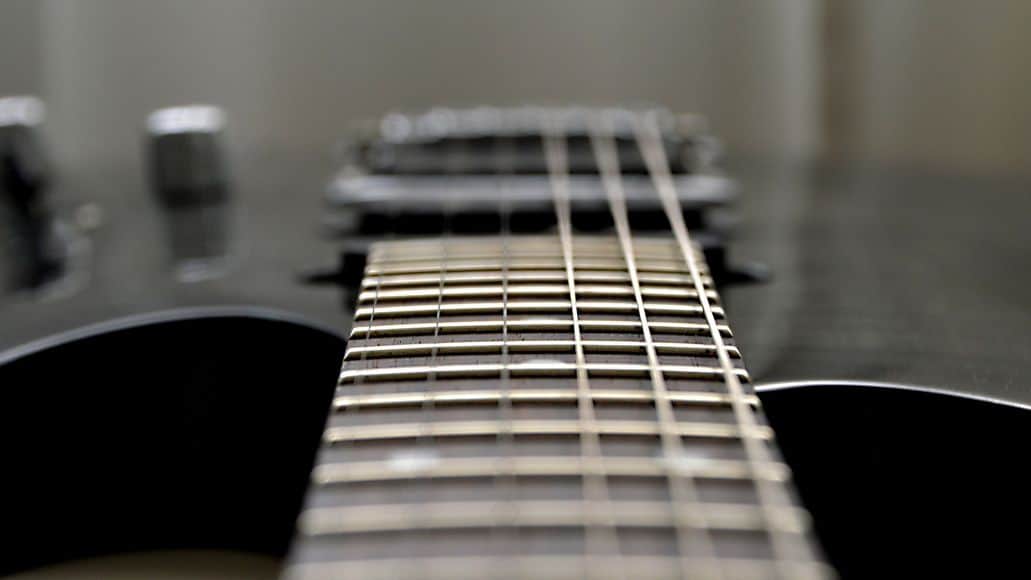
Below, there are guidelines on how to clean your strings everyday (which is recommended), how to give your strings a deep clean, how to clean bass strings, and a little information on lubricating your strings. They work for any type of guitar, from a plain acoustic or classical model to the best electric baritone guitars.
Quick Clean (Every Time You Play)
Materials Needed
A microfiber cloth like this one.
Before Playing
Before dancing your fingers over the frets, wipe the strings down with the cloth.
After Playing
When you're done laying it down, wipe your strings down again. And while you're at it, you might as well give the rest of your guitar a little wipe down too. Build good habits. Learning to play the guitar can be hard. Don't let those efforts go to waste, by overlooking the easy things, like quickly wiping down the strings.
Deep Clean
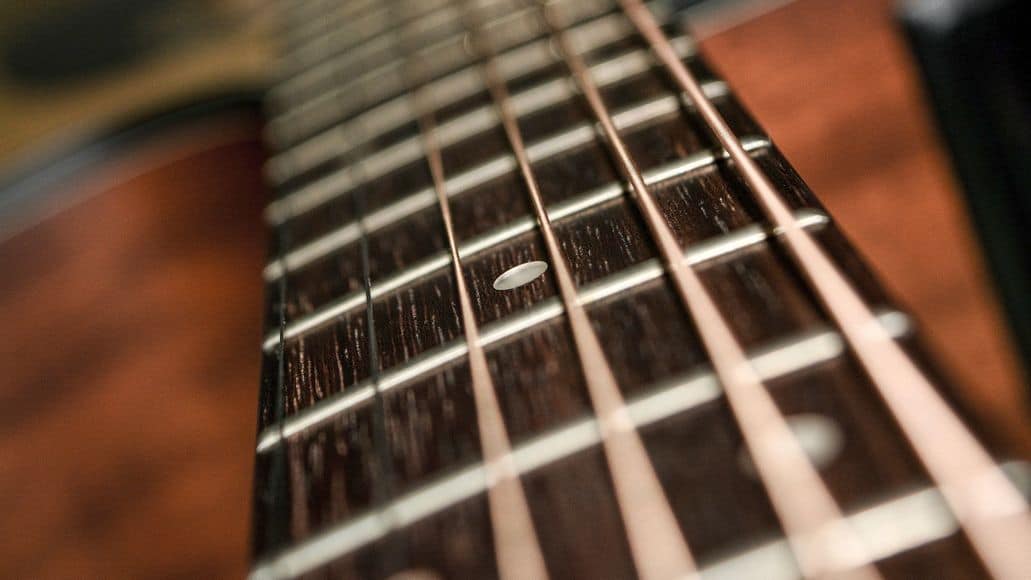
Materials Needed
- A microfibre cloth, or a string cleaning tool, if you have one (for the sake of brevity, we'll call it cloth throughout)
- Guitar string cleaner or 70% – 90% rubbing alcohol solution (optional for steel strings)
- Water (for nylon strings)
Step 1: Prepare The Guitar
Lay your guitar down on your lap, a table, or any other surface. If you want to protect the headstock and tuning pegs, find something that will keep the head raised, like a block.
Step 2: Wet Your Cloth
The type of guitar strings you're cleaning determines what you'll wet your cloth with.
If you're cleaning nylon strings, dampen the cloth with water.
If you're cleaning steel strings, you dampen the cloth with guitar string cleaner, or with a 70% – 90% alcohol solution. However, this isn't absolutely critical, because you'll still be able to clean your strings without either of these solutions – they'll just make them that extra bit more immaculate.
A word to the wise: be careful if you use the rubbing alcohol – it can damage your fretboard.
Step 3: Pinch And Rub
Before carrying out this step, just know that it will probably throw your guitar a little out of tune. With your cloth, wet or not, grab and pinch the high E string at the bridge. Pull on it a little, so it lifts. Then rub the cloth all the way up the string, to the nut, and back down. Do this a few times on each string.
Step 4: All At Once
Now that each individual string has had it's moment, it's time to get at them all at once.
At either end of the guitar, slip half of the cloth beneath all the strings. If you are cleaning an acoustic guitar's strings, the soundhole might help make it a little easier to get this right.
Then fold the other half of the cloth over the strings, so that they're covered. Just like you did before, rub the strings up and down a few times, right to the nut or bridge.
When you slide one direction, apply downward pressure to the top of the strings. When you make your way back in the other direction, apply upward pressure to the bottom of the strings.
Bass Strings
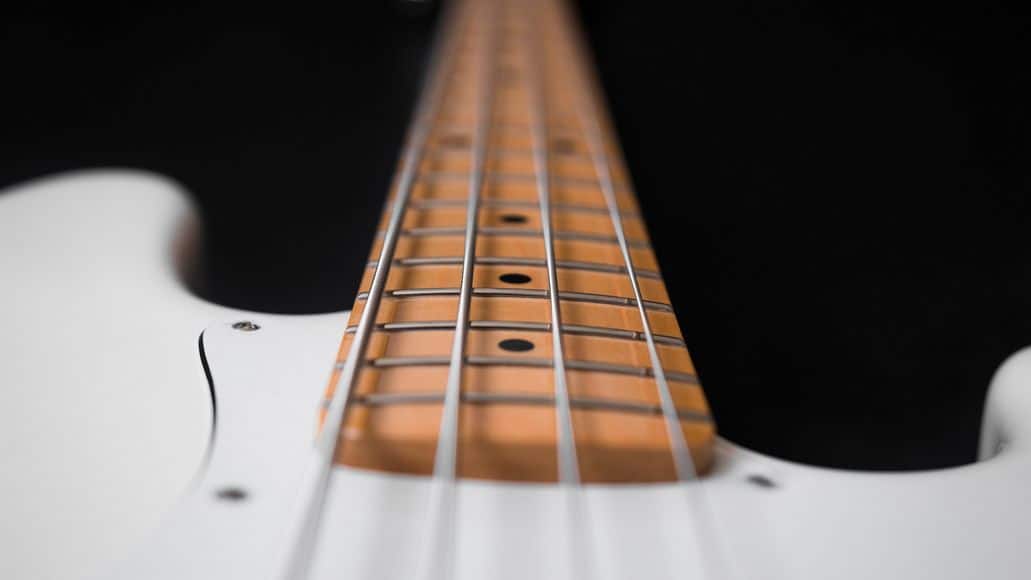
If you're a bassist, the steps above will work perfectly well for your bass strings. But there's something else you can do to get your strings as clean as they possibly can be, without replacing them completely.
And that is to boil them. As strange as it might sound, it does work. But we do not recommend doing this over and over to the same set of strings – it does tend to wear strings down.
Materials Needed
- Boiling water
- A container big enough to hold the strings
Step 1: Take Them Off
Might be obvious, but take your strings off your bass before doing this, please.
Step 2: Boil Them
Fill the container with enough boiling water to keep the strings submerged. Put the strings into the water. Let them boil in there for 10 to 15 minutes, depending on how dirty the strings are. The hot, bubbling water will dislodge the dirt in the strings' grooves.
Step 3: Take Them Out
Please, please be careful. Use tongs to pull them out the water. Set them aside to dry before restringing your bass with them.
Lubricating Your Guitar Strings
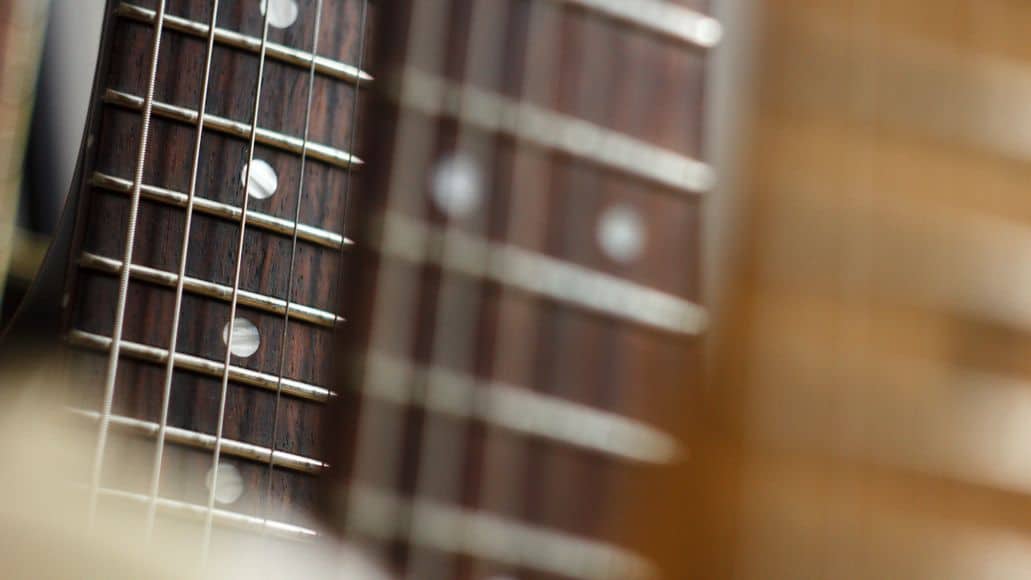
At the end of the whole process, you have the option of lubricating your strings. There is a lot of back and forth as to whether doing this is worth it, or just a waste of money.
If you fall on the side that says it's totally worth it, here's how to lubricate your strings. Assuming they are not nylon, of course. There is no need to lubricate nylon strings at all.
Materials Needed
- A microfibre cloth
- Guitar lubricant that is not petroleum based (those can damage your guitar after continued use)
Step 1: Spray
Spray the lubricant onto the cloth. Do not spray it onto the strings. This is important because you don't want the lubricant to get on to the fretboard.
Step 2: Wipe
Just like you did when you cleaned your strings, slip the cloth beneath the strings, and then fold it over the top of the strings. Obviously, you want the wet side facing the strings.
Using the same motion and applying the same pressure as described above, rub up and down the strings to get the lubricant all over them.
How To Clean A Guitar Fretboard
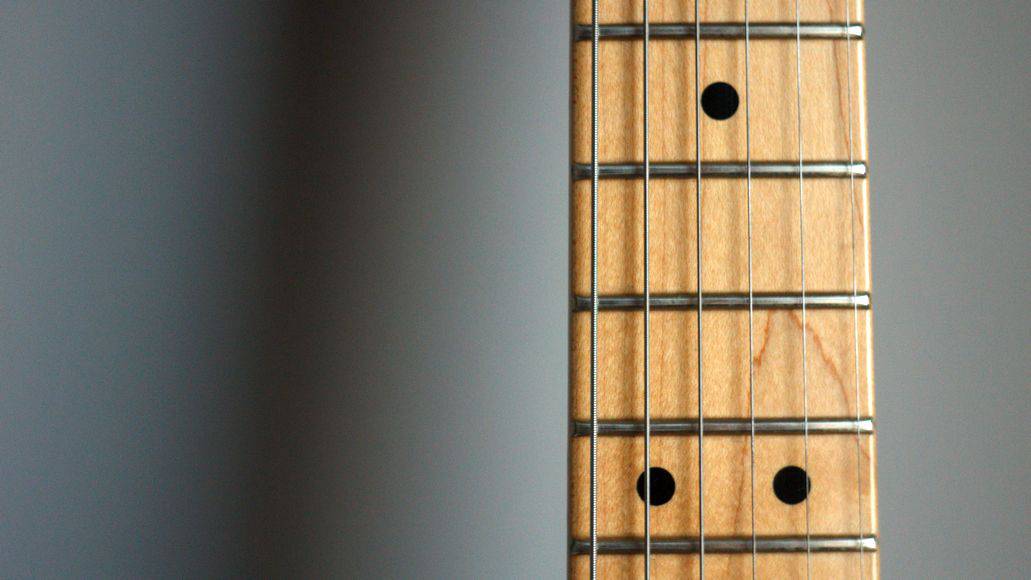
If you're at the point where you need to give you strings a deep clean, then you more than likely need to clean your fretboard as well. No matter how many frets on a guitar, if you've never cleaned your fretboard, or it has just been a long time, some pretty gross gunk will probably have built up.
Materials Needed
- 0000 steel wool (basically, it's super fine steel wool)
- Masking tape
- Latex gloves
- Cloth or toothbrush
- Fretboard cleaning product
Step 1: Protect Your Pickups
Cover your pickups with masking tape so that the fine metal fibers from the steel wool don't get stuck to the magnets.
Step 2: Scrub
Put on the latex gloves to protect your hands. In small, circular motions, use the steel wool to scrub the fretboard. But be gentle. You don't want to ruin your fretboard.
The steel wool you use is very fine, so it shouldn't cause too much harm anyway. When you're done, wipe away any debris left over from the steel wool.
Step 3: Condition
This step is the one that ends up being the most beneficial for your guitar and its lifespan. It re-hydrates the wood in the fretboard, protecting it and cleaning it all at once.
Put some fretboard cleaning product on the cloth or the toothbrush (which you use is entirely up to you). Be conservative in how much fretboard cleaning product you use – you don't want to use too much and end up drowning your fretboard, because that could end up warping it.
All of the above steps apply to Rosewood, Ebony and Pau Ferro fretboards. Maple fretboards are a little different, though.
Maple fretboards are lighter in color than fretboards made from other woods, so the dirt is a lot more visible on them. Also, some are lacquered, but some aren't.
So you have to treat them a little differently.
For unlacquered maple fretboards, you can still carry out steps 1 and 2: glove up and scrub the fretboard with very fine steel wool. But for step 3, don't use a cleaning product. Instead, just wipe the fretboard down with a damp cloth.
For lacquered maple fretboards, you don't really need to carry out step 1, because you shouldn't carry out step 2 or 3. Instead, just rub the fretboard down with a damp cloth. If the lacquer on your fretboard has been applied quite thickly, you have the option of using a little bit of fretboard cleaning product instead of water.
Cleaning Guitar Strings: Final Thoughts
If you do not clean your guitar strings regularly, they will eventually become so gunked up that they no longer sound good. Ideally, you should give them a quick clean every single time you play and a regular deep clean to really get all of the grime out.
And don't neglect the fretboard. Whenever you do a deep clean of your strings, that is the perfect opportunity to clean the fretboard as well. If you treat your guitar with love and keep it it top condition, it will reward you with the best possible sound.
While these two parts of the guitar need the most regular cleaning, the rest of the instrument needs proper care as well. Our article on how to clean a guitar will help you with that.
How to Clean Bass Strings Without Taking Them Off
Source: https://musicaroo.com/how-to-clean-guitar-strings/
0 Response to "How to Clean Bass Strings Without Taking Them Off"
Post a Comment